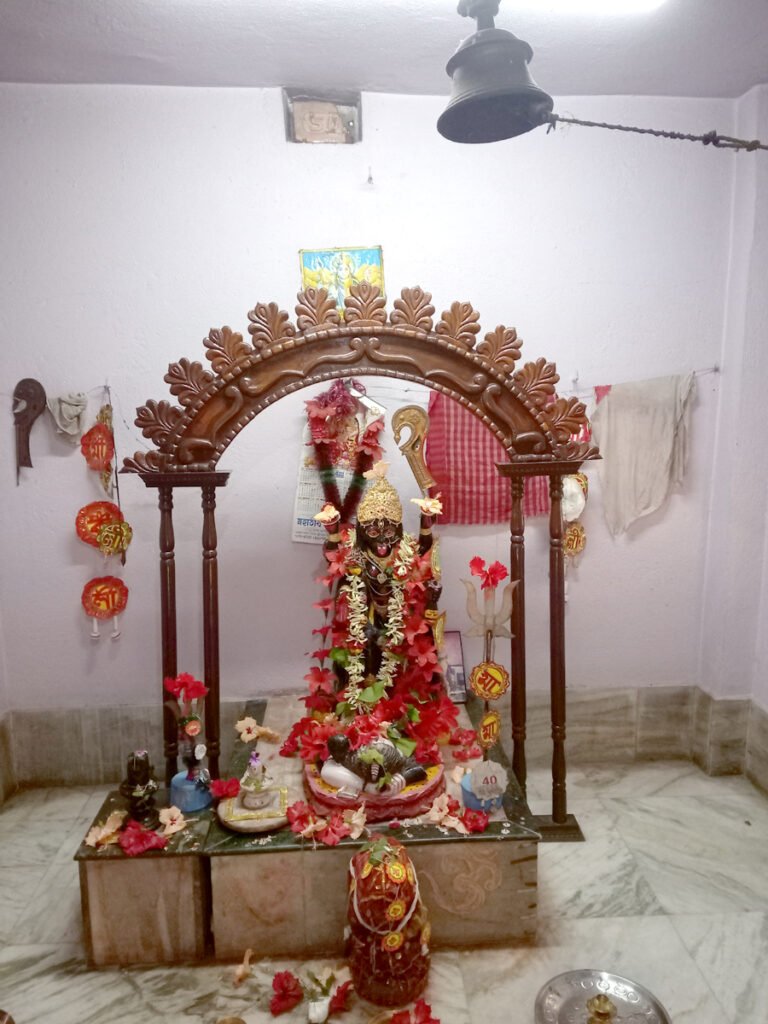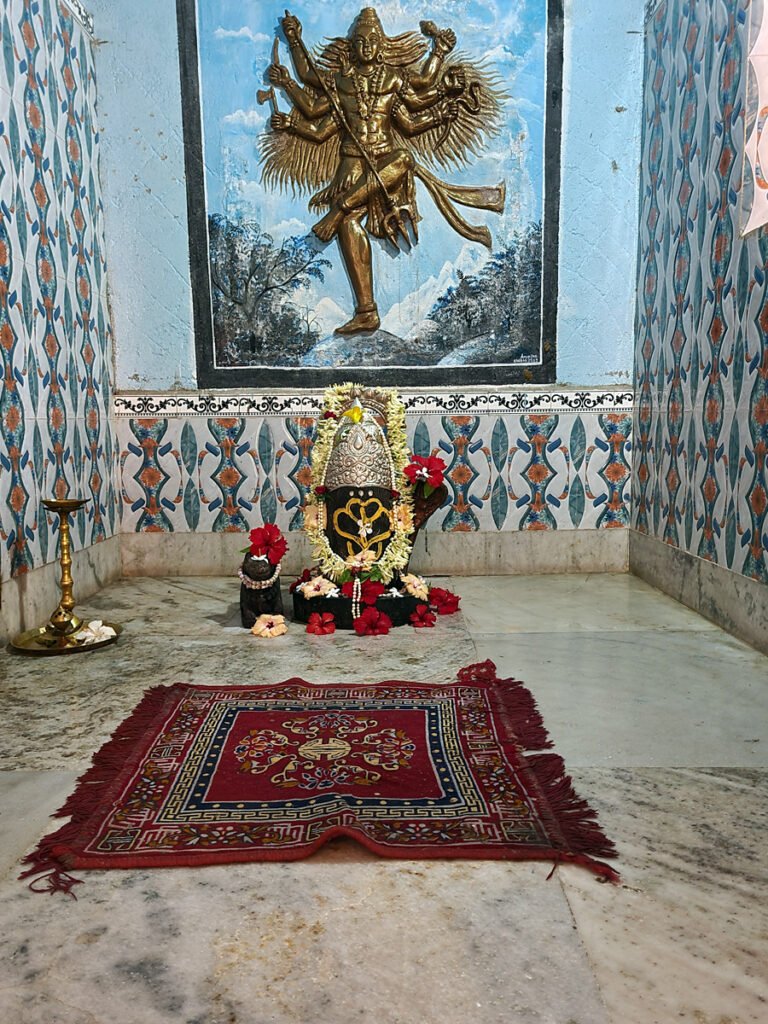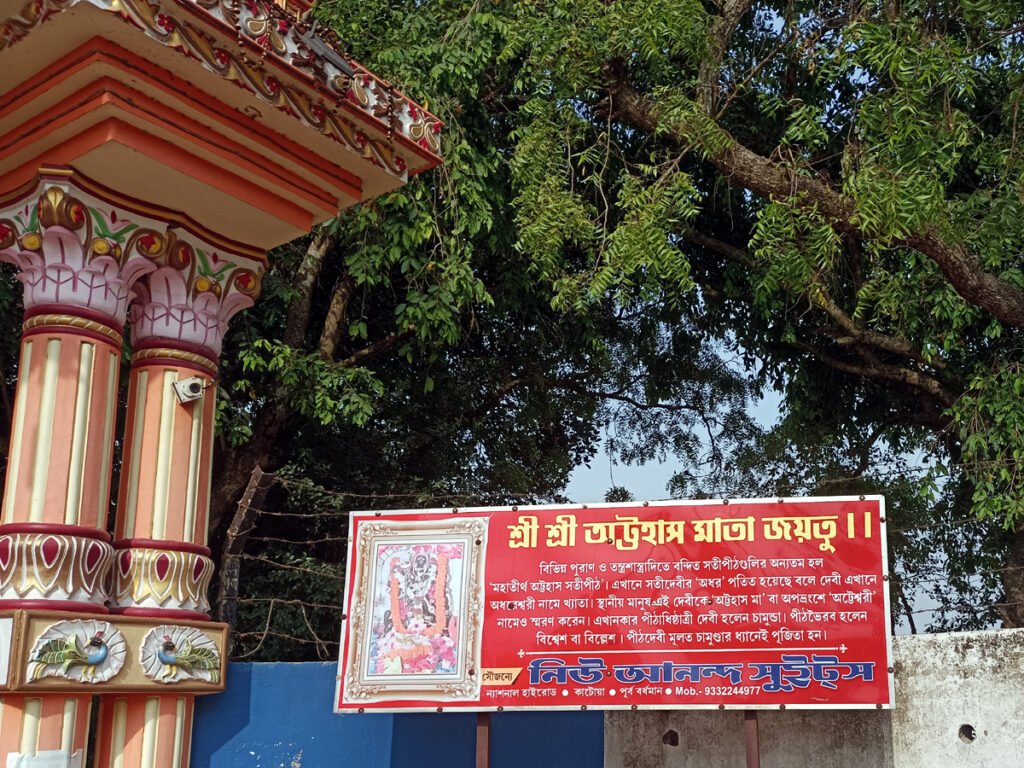Attahas Temple Birbhum Shaktipeeth
Attahas Temple is one of the 51 Shakti Peethas, which are shrines that are prominent places of worship for the Shakta sect (Shaktism) of Hinduism. These are places where the body parts of Sati Devi’s corpse fell when Lord Shiva carried her body after her death. The place where her body parts fell was enshrined by the divine presence of Shakti.

The Attahas Temple is located in the Dakshindihi village in the Birbhum district of West Bengal, India. The word “Attahas” is a Sanskrit word that means “profound laughter”. According to legend, when Sati Devi’s body parts fell to Earth, she laughed so loudly that the place where her lower lip fell came to be known as Attahas.
The temple is said to have been built by the Pandavas, the heroes of the Mahabharata epic. The original temple was destroyed by the Mughals in the 16th century, but it was later rebuilt. The current temple is a two-story structure with a pyramidal roof. The main deity of the temple is a
stone statue of the goddess Sati Devi, which is about 15 feet long. The statue is said to represent the lower lip of the goddess.
The Attahas Temple is a popular pilgrimage site for Hindus. It is especially crowded during the month of December when the annual festival of Durga Puja is held. The temple is also a popular tourist destination.
Read More>> Danteshwari Temple Dantewada
Contents
- 1 Here are some other interesting facts about the AttahasTemple:
- 2 Here are the steps involved in the daily pooja at the Attahas Temple:
- 3 Places to visit near Attahas Temple:
- 4 FAQ:
- 4.0.1 What is Attahas Shaktipeeth?
- 4.0.2 What is the meaning of Attahas?
- 4.0.3 What is the legend of Attahas Shaktipeeth?
- 4.0.4 What are the timings of Attahas Shaktipeeth?
- 4.0.5 What are the major festivals celebrated at Attahas Shaktipeeth?
- 4.0.6 What are the rituals performed at Attahas Shaktipeeth?
- 4.0.7 What are the benefits of visiting Attahas Shaktipeeth?
- 5 How to reach Attahas Shaktipeeth?
- 6 Google Maps:
Here are some other interesting facts about the Attahas
Temple:
- The temple is believed to be over 5,000 years old.
- The temple is located on the banks of the Ishani River.
- There is a natural pond in the temple complex, which is said to have healing properties.
- The temple is surrounded by a forest, which is home to a variety of animals and birds.
- The temple is said to be very haunted. Many people have reported seeing ghosts and hearing strange noises in the temple complex.
- The temple is a popular spot for picnics and other outdoor activities.
Whether you are a religious pilgrim or a curious tourist, the Attahas Temple is a fascinating place to visit. The temple is steeped in history and legend, and it is a beautiful example of Hindu architecture.
The daily pooja at the Attahas Temple is performed in the morning and evening. The morning pooja begins at 6:00 AM and includes the offering of flowers, incense, and prayers to the goddess. The evening pooja begins at 6:00 PM and includes the same offerings, as well as the performance of an aarti, or lamp-lighting ceremony.
On special occasions, such as during festivals or religious holidays, the pooja at the Attahas Temple is more elaborate. These special pooja ceremonies may include the recitation of mantras, the performance of dances, and the offering of food and gifts to the goddess.
Read More>> Biraja Temple Shakti Peeth Jaipur

Here are the steps involved in the daily pooja at the Attahas Temple:
- The priest or pujari arrives at the temple and prepares the altar.
- The priest bathes the idol of the goddess and dresses her in new clothes.
- The priest offers flowers, incense, and prayers to the goddess.
- The priest performs an aarti, or lamp-lighting ceremony.
- The priest distributes prasad, or blessed food, to the devotees.
The pooja at the Attahas Temple is a sacred ritual that is performed by the priest or pujari to honor the goddess Phullora. The pooja is believed to bring blessings and protection to the devotees who participate in it.
Places to visit near Attahas Temple:
- Hangseshwari Temple: This temple is situated in Bansberia, which is relatively close to Attahas Temple. The temple is dedicated to Goddess Hangseshwari and is renowned for its unique architecture and serene surroundings.
- Tarakeshwar Temple: Located in Tarakeshwar, this temple is dedicated to Lord Shiva and is a significant pilgrimage site. It’s known for its large Shiva Linga and is a place of religious and cultural importance.
- Chandannagar: Explore the charming French colony of Chandannagar, which is known for its colonial-era architecture, riverside promenades, and a rich cultural heritage. It’s an interesting place for history enthusiasts.
- Chinsurah: This town, located on the banks of the Hooghly River, has a historical Dutch heritage. You can visit the Dutch Cemetery, Dutch Church, and other colonial-era structures.
- Serampore: This town has a rich history and was a Danish colony in the past. Explore the Serampore College, William Carey Museum, and other historical sites.
- Imambara at Hooghly: The Imambara in Hooghly is a significant religious site for the Shia Muslim community. The architecture of the Imambara is awe-inspiring, and it’s a place of historical importance.
- Guptipara: This charming village is known for its terracotta temples, which are similar to those found in Bishnupur. The intricate terracotta work on these temples is a sight to behold.
- Bansberia Kali Temple: Dedicated to Goddess Kali, this temple is located in Bansberia and is known for its grandeur and the annual Kali Puja celebrations.
- Hooghly River Cruise: Consider taking a boat ride along the Hooghly River to enjoy the scenic beauty and get a different perspective of the region’s historical sites.
Read More>> Konark Sun Temple 13th Century Gem

FAQ:
What is Attahas Shaktipeeth?
Attahas Shaktipeeth is one of the 51 Shaktipeeths in India, located in the Nirol Gram Panchayat in the Katwa subdivision of the Bardhaman district of West Bengal. It is believed that the lower lip of Goddess Sati fell at this place after she immolated herself in the Daksha Yajna.
What is the meaning of Attahas?
The word “Attahas” is a combination of two Sanskrit words, “atta” (loud) and “has” (laughter). It is believed that the Goddess laughed when she saw the lower lip of her dead body.
What is the legend of Attahas Shaktipeeth?
According to the legend, Sati was the daughter of Daksha, a king who was a devoted follower of Lord Vishnu. When Daksha performed a Yajna, he did not invite his son-in-law, Lord Shiva. Sati was so offended that she immolated herself in the fire.
Lord Shiva was overcome with grief and anger. He carried the body of Sati on his shoulders and began to dance the Tandava. The world was shaken by the dance and the gods were afraid. They asked Vishnu to intervene.
Vishnu used his Sudarshana Chakra to cut Sati’s body into 51 pieces. These pieces fell to different parts of the world, becoming Shaktipeeths.
The lower lip of Sati is believed to have fallen at Attahas Shaktipeeth.
What are the timings of Attahas Shaktipeeth?
The temple is open from 5:30 am to 1:00 pm and from 3:30 pm to 8:30 pm.
What are the major festivals celebrated at Attahas Shaktipeeth?
The major festivals celebrated at Attahas Shaktipeeth are Durga Puja and Navaratri.
What are the rituals performed at Attahas Shaktipeeth?
The main ritual performed at Attahas Shaktipeeth is the darshan of the deity. Devotees also offer prayers and perform pujas.
What are the benefits of visiting Attahas Shaktipeeth?
It is believed that visiting Attahas Shaktipeeth can help to relieve suffering, achieve moksha, and fulfill wishes.
Read More>> Trimbakeshwar Jyotirlinga Temple

How to reach Attahas Shaktipeeth?
Road: There are several buses that ply between Kolkata and Katwa. You can take a bus from Kolkata to Katwa and then get down at the Nirol bus stop. From Nirol, you can take a rickshaw or motor van to Attahas.
Railways: The nearest railway station to the temple is Labpur railway station, which is about 1.2 kilometers away. Katwa Railway Station, which is about 29.7 kilometers away. From the station, you can take a taxi or rickshaw to Attahas.
Airways: The nearest airport is Kazi Nazrul Islam Airport, which is about 113 kilometers away.
